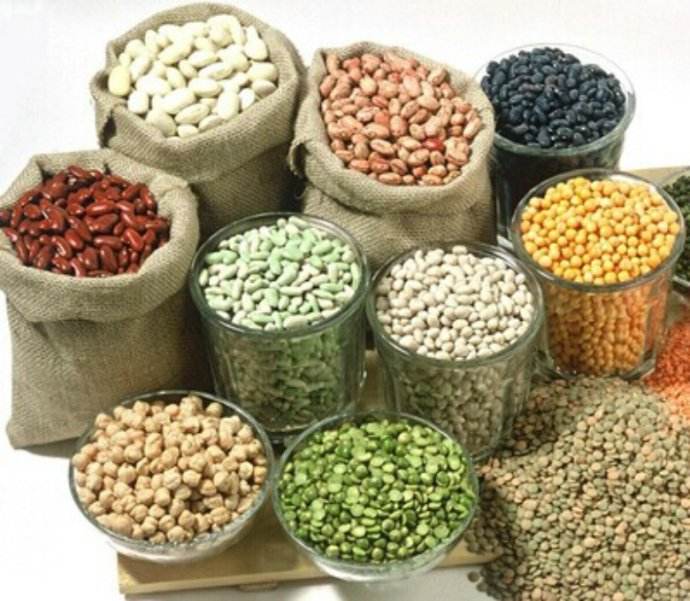
High Fiber Diet Keeps Intestinal Walls Intact
高纤维饮食保护肠壁
A low-fiber diet causes fiber-eating microbes to dwindle, opening up real estate for mucus munchers that make the intestine more vulnerable to infection. Christopher Intagliata reports.
低纤维的饮食导致以纤维为食微生物数量减少,使细菌滋生,肠道更易感染。克里斯托弗·因塔利亚塔报道。
撰文/播音:克里斯托弗·因塔利亚塔(Christopher Intagliata)
翻译:郭鑫鹏
审校:丁可含
Your nose may be the first place you think of as a source of mucus. But mucus is a major player in your gut, too. “There’s antimicrobial peptides and proteins that are present in there. Bacteria live in there and forage on the carbohydrates. And it’s a lubricant, it helps sweep contents down the GI tract, without injuring the epithelial layer.”
你的鼻子可能是你能想到的人体第一个粘液源。但是粘液在你的消化道中也发挥着重要作用。“这里有抗菌肽和蛋白质。细菌在这里存活并以碳水化合物为食,它们作为一种润滑剂,帮助食物穿过胃肠道,而不会伤害到上皮层。
Eric Martens, a microbiologist at the University of Michigan. He says farther down the GI tract, in the colon, the mucus builds a wall: a barrier against friendly bacteria, “as well as pathogens that could be transiting through.” But here’s the problem: your gut bacteria may chew right through that wall-if you skimp on fiber in your diet.
密歇根大学微生物学家埃里克·马滕斯说,胃肠道下方的结肠中,粘液组成了一道屏障,阻挡有益细菌,而病原体可以通过。但是这里有个问题,如果你在饮食中减少纤维的摄入,你的肠道细菌可以消化那道墙。
Martens and his team modeled that scenario in mice who’d been born free of microbes. They seeded the mice’s guts with a human gut microbiome-then fed them a high-fiber diet: raw milled corn, whole wheat, whole soybeans and oats. “It’s about as raw of a diet as you can get.” The human equivalent: double our recommended daily intake of fiber. “It’s a lot of kale.”
马滕斯和他的团队在无微生物环境出生的老鼠身上进行了实验模拟。他们在老鼠的肠胃中放入了人类肠道微生物,然后给它们高纤维食物:原料磨碎的玉米、全麦粉、全大豆和燕麦。“你能得到的原始饮食。“这些等同于人类2倍推荐纤维日摄入量。”这是相当多的羽衣甘蓝。“
That extreme high-fiber diet helped keep the mucus barrier intact. But in mice that had zero fiber-or the kind of soluble fiber typically added to processed foods-the fiber-eating members of the gut dwindled. Their absence opened up more real estate for mucus-munching bacteria, which boomed in number, and tore through the protective mucus wall-leaving intestinal cells open for microbial attack. The study is in the journal Cell. [Mahesh S. Desai et al., A Dietary Fiber-Deprived Hut Microbiota Degrades the Colonic Mucus Barrier and Enhances Pathogen Susceptibility]
这样高纤维饮食帮助粘液屏障不受破坏。但是那些没有摄入纤维或只摄入了加工食物中添加的可降解纤维的老鼠,它们的肠胃中以纤维为食的生物会慢慢减少。这样的缺失使得以粘液为食细菌数量大大增多,将保护性粘液壁破坏,让肠道细胞暴露在微生物的攻击下。研究发表在《细胞》上。
The results suggest that “the recent history of your diet could predispose how you react to an enteric pathogen.” And they’re yet another endorsement of the magical properties of plant fiber. “Eating natural vegetables, raw vegetables, cooked veggies, whole grains, is definitely good for you.” The good news is, the mice’s gut bacteria bounced back within a day to a change in diet. So eat for the gut you want. Not the gut you have.
结果表明,“你近期的饮食能够左右你对某种肠道致病菌的反应。“它们也是植物纤维神奇特性的另一证明。”多吃天然蔬菜、生菜、煮熟的蔬菜、全谷类等食物,对你很有帮助。“好消息是,在调整了饮食后,老鼠肠道细菌在一天之内迅速恢复活力。因此,吃一些肠胃需要的东西,防止细菌损害肠胃。
-Christopher Intagliata
原文链接:
https://www.scientificamerican.com/podcast/episode/high-fiber-diet-keeps-intestinal-walls-intact/
(题图来源:https://image.baidu.com)